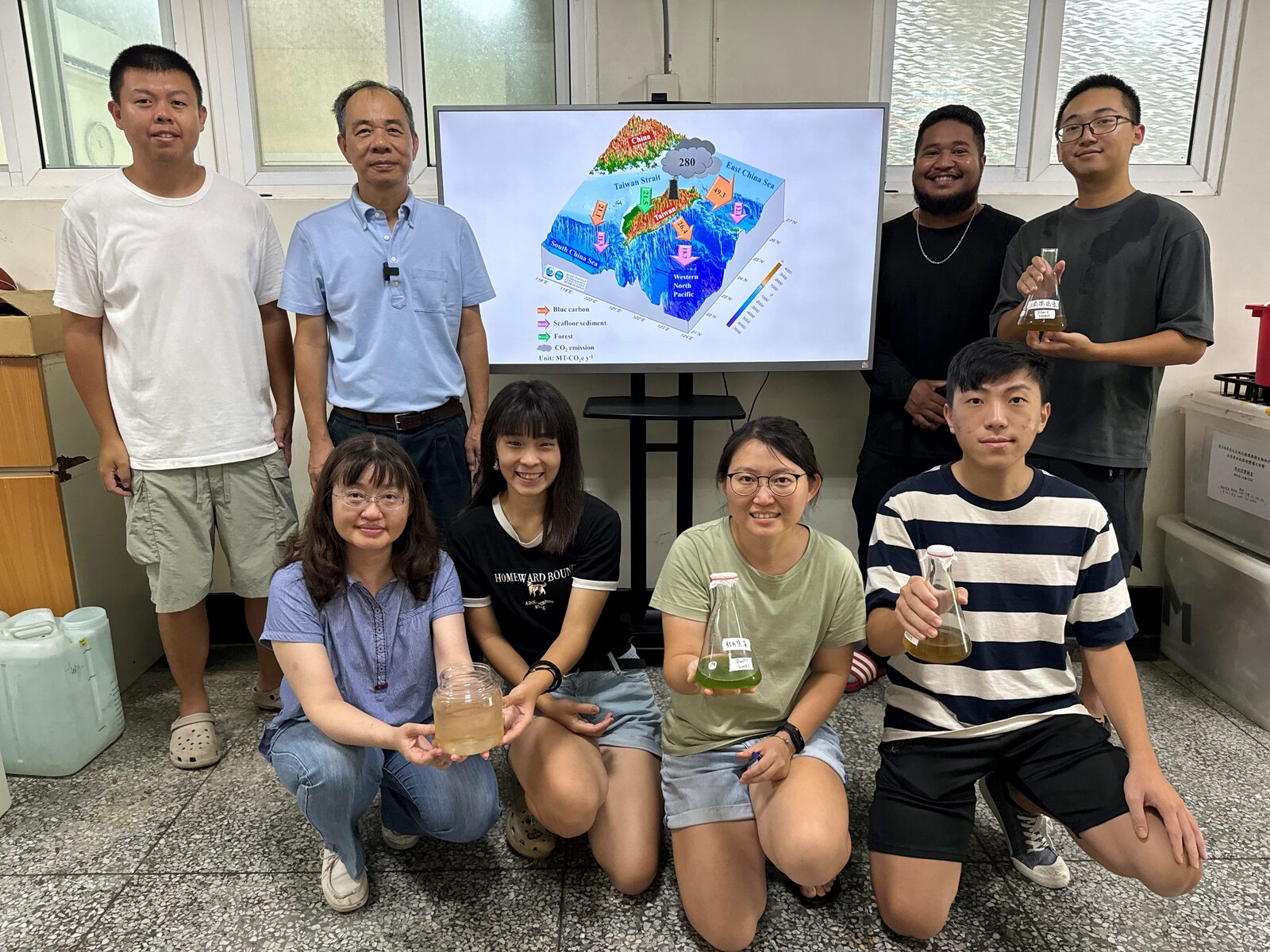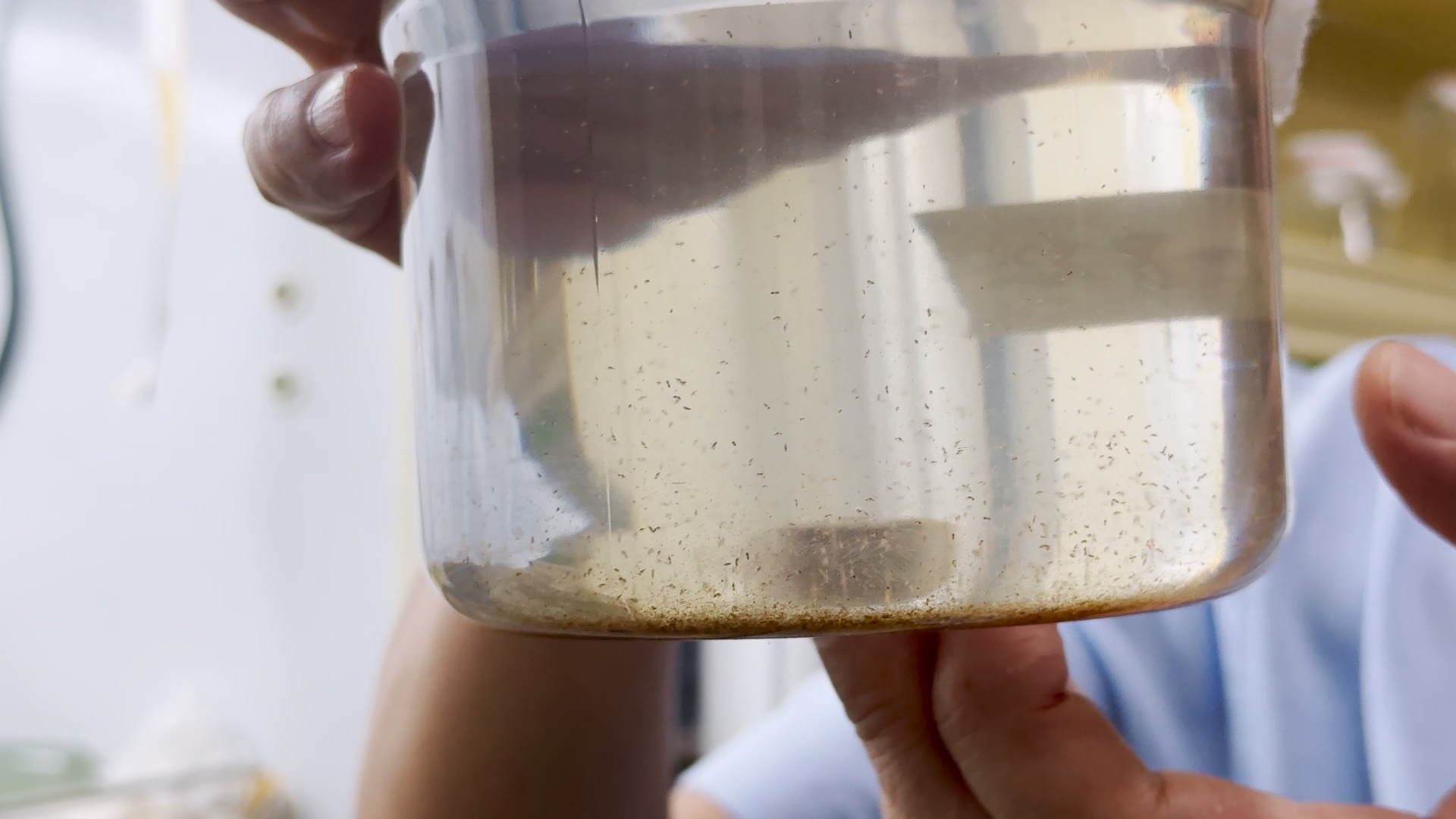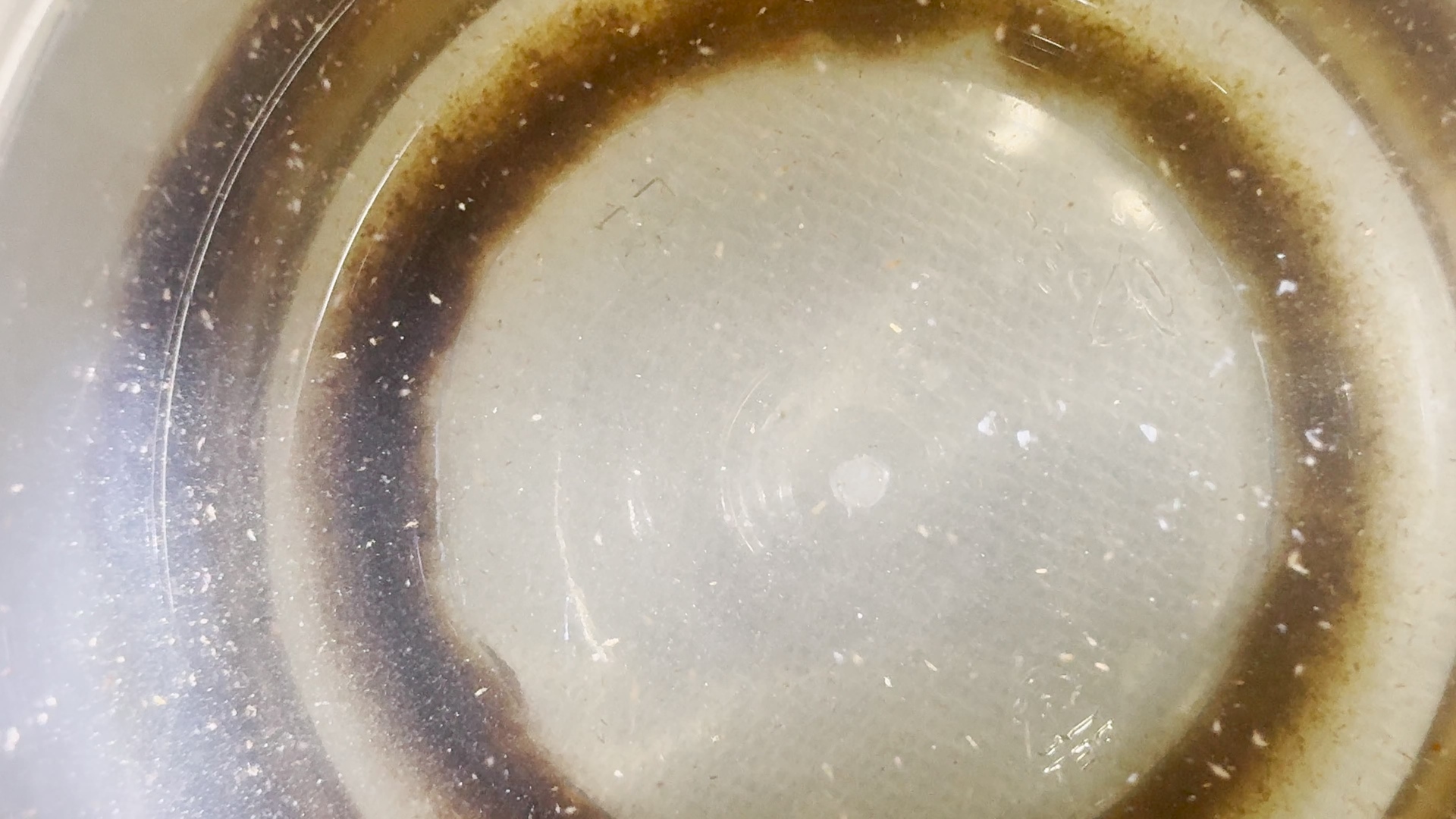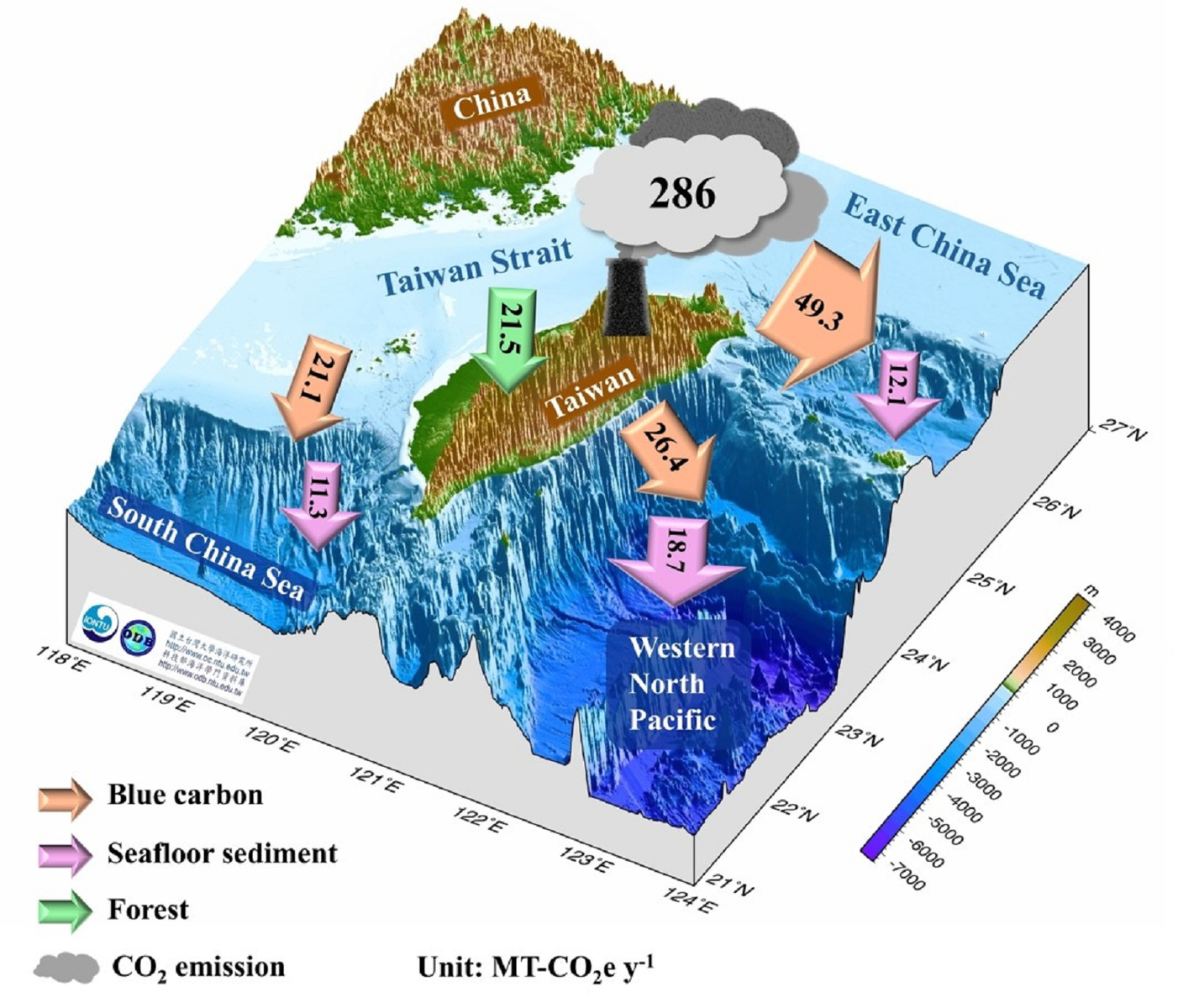Plankton "fecal pellets" enhance blue carbon: NSYSU carbon sink research is published in an international journal





2024-12-17
If marine carbon sinks are overlooked, Taiwan's pursuit of carbon neutrality will be like an "impossible mission"! Distinguished Professor Chin-Chang Hung from the Department of Oceanography at National Sun Yat-sen University (NSYSU) has spent 15 years researching marine blue carbon and confirmed that the "fecal pellets" produced by marine zooplankton are a significant source of particulate organic carbon (POC). These particles play a crucial role in sequestering significant amounts of carbon dioxide in the deep ocean through the food chain. This process removes 33.8% of Taiwan's annual carbon emissions - highlighting its remarkable potential! The findings, published in the Marine Pollution Bulletin, emphasize the importance of incorporating marine blue carbon into the government's nature-based solutions.
The research team pointed out that many nations have proposed reducing greenhouse gas emissions as a fundamental solution to global warming, aiming to achieve net-zero emissions by 2050. This goal has driven the development of carbon mechanisms such as carbon credits, carbon taxes, and carbon fees. Taiwan's Carbon Trading Regulations took effect this August 2024, with consumer activities expected to be included in carbon emissions calculations. However, Taiwan still lacks comprehensive data on its carbon sink (carbon removal) capacities. There is urgent need to accurately assess the carbon sink capacities of Taiwan's forests, oceans, and sediments. In response to this need, Chin-Chang Hung and Associate Professor Yung-Yen Shih from the R.O.C. Naval Academy have led a cross-university, international research team to conduct Taiwan's first comprehensive inventory of "nature-based carbon sink." Their work emphasizes the critical role of oceans in global climate solutions, and provides a critical scientific foundation for future carbon sink research and policy-development.
The study integrates 15 years of POC flux data, collected by Professor Hung's team from 2006 to 2020, along with related literature, to reveal the significant role of Taiwan's surrounding marine blue carbon in removing carbon dioxide. Chin-Chang Hung explained that, compared to green carbon from trees and yellow carbon from soils, marine blue carbon is the world's largest carbon sink due to the vast expanse of the oceans. While most people assume that coastal blue carbon - such as mangroves, seagrasses, and salt marshes – plays the dominate role in carbon absorption, research reveals that the true carbon-absorbing powerhouse is the countless, invisible marine plankton, as well as decomposing particles and "fecal pellet" from all marine organisms. He noted that sunlight penetrates up to about 150 meters below the ocean surface. In this euphotic zone, marine phytoplankton absorb carbon dioxide (inorganic carbon) through photosynthesis. When consumed by zooplankton, these tiny particles are metabolized into fecal particles. This process indirectly transforms microalgae into POC, which then sinks into the deep ocean or seabed sediments. There, it can be stored for decades or even centuries, functioning as a critical "biological pump" that supports the blue carbon cycle.
Chin-Chang Hung outlined Taiwan's current natural carbon sink status: the annual CO₂ removal rates for forest carbon sinks, ocean sediment carbon sinks, and marine blue carbon are 21.5 million tons, 42.1 million tons, and 96.8 million tons, respectively. Notably, marine carbon sinks account for about 33.8% of Taiwan's total annual carbon emissions of 286 million tons, underscoring their critical role in achieving Taiwan's carbon neutrality target. However, Taiwan still faces a CO₂ shortfall of around 160 million tons to reach net-zero emissions. Professor Hung emphasized the need for enhanced in-situ measurements of Taiwan's land and marine carbon sinks, advocating for more research vessels to support these studies. At the same time, Taiwan should accelerate decarbonization strategies, including reducing fossil fuel usage and advancing electric vehicles, renewable energy, and hydrogen technologies. Future policies should incorporate more innovative techniques such as bioenergy with carbon capture and storage (BECCS), afforestation, reforestation, biochar, large-scale seaweed cultivation, and ocean alkalinity enhancement to effectively achieve carbon neutrality by 2050.
The journal article's authors include Professor Peter Santschi from Texas A&M University, Galveston - Department of Marine and Coastal Environmental Science; Professor R.R.M.K.P. Ranatunga from Sri Lanka's Center for Marine Science and Technology, University of Sri Jayewardenepura; Postdoctoral researcher Hsueh-Han Hsieh from Department of Oceanography at NSYSU; Professor Yi Chang from the Graduate Institute of Marine Affairs at NSYSU; Distinguished Professor Tse-Min Lee from the Department of Marine Biotechnology and Resources at NSYSU; Distinguished Professor Wen-Chen Chou from the Institute of Marine Environment and Ecology at National Taiwan Ocean University; Associate Professor Chun Hoe Chow from the Department of Marine Environmental Informatics at National Taiwan Ocean University, and En-Chi Liu, a student from the Department of Applied Science at the R.O.C. Naval Academy.
Journal link: https://www.sciencedirect.com/science/article/pii/S0025326X24006416
